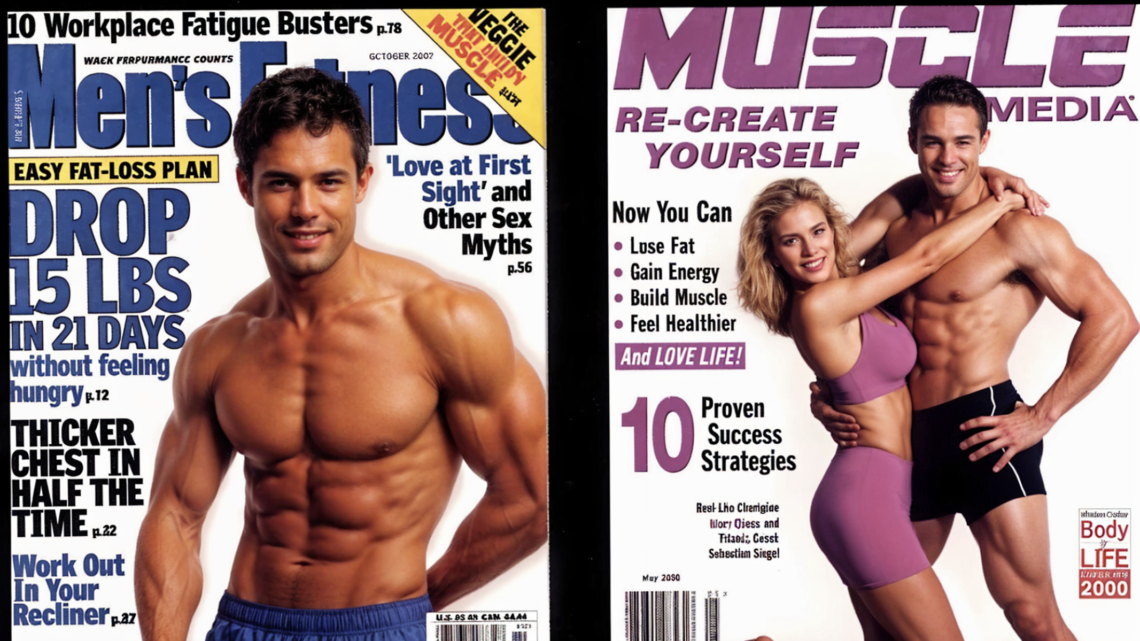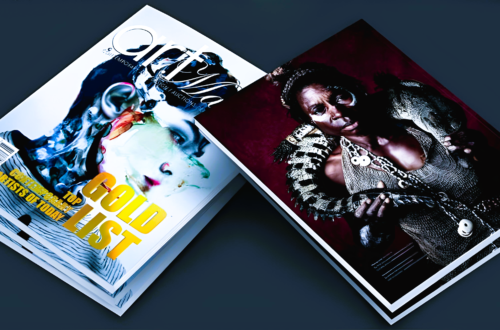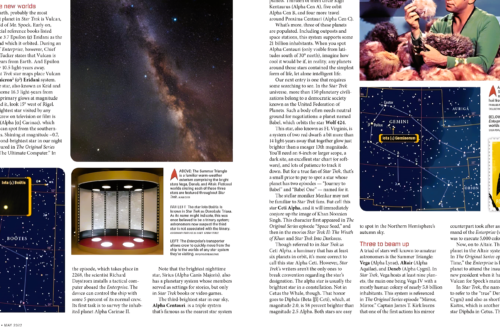
Men’s Interest Publications Through the Years
When we think of men’s interest publications, images of glossy magazines showcasing everything from sports cars and fashion to the latest gadgets and fitness tips come to mind. Over the years, these publications have evolved dramatically, both in terms of their content and their role in the broader media landscape. But how did we get here, and where are these publications headed? Let’s take a deep dive into the world of men’s interest publications, tracing their roots, exploring their evolution, and seeing how they’ve adapted to the modern era.
The Birth of Men’s Interest Publications
The rise of men’s interest publications can be traced back to the early 20th century when the demand for content specifically geared toward men began to emerge. Prior to this, most publications were aimed at a general audience, with few magazines focused specifically on addressing the distinct needs and desires of men. This shift marked the beginning of an era where men’s magazines started to carve out their own niche in the media landscape.
In the early 1900s, magazines like The Strand Magazine and Harper’s Weekly were incredibly popular, but these were general-interest publications targeting a broad readership. The first major shift toward men’s-specific content came with the introduction of publications that began to highlight topics traditionally associated with male interests. These included themes like hunting, fishing, sports, and, in some cases, even the emerging focus on business and technology. As the social landscape changed, so did the focus of publications, with men’s magazines starting to reflect their readers’ evolving tastes.
During the 1920s and 1930s, as the Roaring Twenties transitioned into the Great Depression, men’s magazines began to take on a more distinct identity. Publications like Esquire, which launched in 1933, became iconic during this period. These magazines blended not just fashion and style, but also literature and lifestyle, reflecting a new cultural shift. Esquire in particular catered to the aspirations of men during this time, combining sophistication with a celebration of modern masculinity. This was a pivotal moment in the history of men’s magazines, as they began addressing the multifaceted interests of men, far beyond just traditional hobbies or outdoor activities.
The 1950s brought another significant milestone with the launch of GQ (Gentlemen’s Quarterly), which represented the fusion of fashion and lifestyle. This magazine offered men guidance on everything from stylish suits and shoes to cocktails and grooming. This era also saw the emergence of magazines like Playboy, which redefined the concept of adult content for men. Playboy went beyond just showcasing nudity; it presented a vision of luxury, sophistication, and sexual freedom that resonated with a wide audience. This period marked the birth of modern men’s magazines, which embraced both style and substance, and catered to the growing demands of men who were looking for content that aligned with their social, cultural, and personal interests.
The Golden Age of Men’s Magazines (1950s-1980s)
| Magazine | Launch Year | Key Focus | Cultural Impact | Legacy |
| Playboy | 1953 | Luxury, indulgence, freedom, celebrity culture, sophisticated editorial content | Revolutionized the concept of men’s magazines by combining style, lifestyle, and adult content | Created a new benchmark for luxury and men’s magazines, influencing future generations of publications. |
| Men’s Health | 1987 | Fitness, health, wellness, bodybuilding | Responded to the growing interest in physical well-being and fitness culture | Became the leading magazine for health-conscious men and defined the modern fitness movement. |
| Esquire | 1933 | Fashion, lifestyle, literature, culture | Helped shape the intellectual and stylish image of the modern man | Continues to be a key influencer in men’s fashion and culture. |
| GQ (Gentleman’s Quarterly) | 1957 | Fashion, grooming, lifestyle, culture | Became synonymous with high-end fashion and lifestyle for men, blending sophistication with masculinity | Remains a staple in men’s fashion and lifestyle media, known for its timeless style. |
| Muscle & Fitness | 1935 | Bodybuilding, fitness, wellness, physical strength | Captured the growing bodybuilding movement and mainstream fitness culture | Contributed to the rise of bodybuilding as a widely recognized lifestyle and fitness pursuit. |
The Digital Revolution: A New Era for Men’s Magazines
- The Transition to Digital:
- Late 1990s and 2000s marked a seismic shift in how men’s publications were consumed.
- Online platforms like AskMen, Men’s Journal, and Hodinkee became prominent in the digital space.
- These platforms embraced the fast-paced nature of the internet, providing men with immediate access to the latest trends in fashion, technology, and lifestyle.
- Men could now read their favorite articles anytime and anywhere on laptops, tablets, and smartphones.
- The Demise of Traditional Print Magazines:
- As digital media flourished, traditional print magazines began to struggle.
- Circulation numbers for magazines like Playboy and Maxim started to decline.
- In 2015, Playboy made the historic decision to stop featuring nude content, a clear sign of how much the media landscape had changed.
- The shift in audience preferences and the digital revolution led to major transformations in the industry.
- The Rise of Niche Publications and Blogs:
- As more men turned to the web for content, niche publications and blogs emerged.
- Sites like Gear Patrol, Hodinkee, and The Art of Manliness began offering highly curated content for specific interests.
- These platforms provided in-depth reviews, product roundups, and opinion pieces tailored to particular subgroups of men.
- With a focus on topics ranging from gadgets and grooming to lifestyle and philosophy, these niche sites became the new go-to for many men seeking more specialized content.
Men’s Magazines Today: Adapting to a New Generation
The world of men’s magazines has undergone a dramatic transformation over the past few decades. While the format has changed, the essence of providing men with content that speaks to their interests and desires remains intact. Today, it’s no longer about just glossy pages or traditional print; instead, it’s about how these publications have adapted to new technology and shifting consumer behaviors. With the rise of the digital era, men’s magazines have found new ways to connect with their audience, offering diverse content across a wide range of platforms.
Social media has become a pivotal player in the evolution of men’s publications. Platforms like Instagram, YouTube, and Twitter now serve as key channels where brands and influencers interact directly with their followers. Men’s lifestyle magazines often collaborate with these influencers to showcase the latest fashion, fitness tips, and grooming products. This immediate access to content creates a sense of urgency and exclusivity, something traditional print magazines were unable to achieve. The integration of influencer culture with magazines reflects the growing demand for real-time content and engagement.
In addition to the rise of digital platforms, men’s interest magazines have evolved to meet the changing needs of modern men. No longer is it just about looking good or having the latest gadgets. Publications like Esquire and GQ have taken a deeper dive into important societal issues such as mental health, work-life balance, and personal growth. As the role of men continues to evolve, these magazines have embraced a more nuanced approach to masculinity. They address topics like vulnerability, identity, and emotional struggles, moving away from the traditional and sometimes outdated norms that once defined masculinity.
Another key shift in today’s men’s magazines is the growing focus on eco-conscious and ethical consumption. Today’s men are increasingly aware of the environmental impact of their choices. As a result, men’s publications have started to incorporate more content around sustainability, highlighting eco-friendly fashion brands, gadgets, and even travel destinations. By promoting green lifestyles and ethical consumption, these magazines are tapping into a new generation of men who value responsibility as much as style.
The Future of Men’s Interest Publications
| Aspect | Description | Technological Impact | Potential for Growth | Audience Impact |
| Interactive and Immersive Experiences | As technology advances, virtual and augmented reality could transform how readers engage with magazines, offering immersive experiences such as virtual product trials or tours. | Virtual and augmented reality will offer immersive engagement. | Virtual and augmented reality can create engaging digital experiences, attracting a more interactive audience. | Readers will engage more deeply with content through immersive experiences. |
| A Focus on Hyper-Personalization | With the use of artificial intelligence and data analytics, men’s magazines will provide more personalized content, from tailored article suggestions to customized product recommendations. | AI and data analytics will enhance personalization. | Hyper-personalization will ensure magazines cater to a niche audience, creating loyal subscribers. | Each reader will feel like the magazine is tailored specifically to their needs. |
| The Importance of Authenticity | Readers will increasingly demand content that feels real and relatable. Honest reviews, candid celebrity interviews, and transparent reporting will be essential for maintaining trust. | Transparency and real experiences will drive loyalty. | Authenticity will attract a broader, more engaged audience seeking real content that connects with them. | Content will feel more genuine, strengthening the bond between reader and publication. |
| The Role of Influencers and Social Media | Influencers and social media will play an even larger role, as magazines collaborate with them for real-time content, creating a direct connection with audiences and leveraging their popularity. | Social media and influencers will provide content real-time. | The relationship with influencers will grow, ensuring magazines stay relevant and appealing. | Social media followers will become more connected to magazines, ensuring they are part of the conversation. |
| Increased Integration of Video and Multimedia Content | Video and multimedia content will become more prominent in men’s magazines, offering dynamic content such as video tutorials, interviews, and product showcases. | Video and multimedia will enhance user experience. | Increasing multimedia content will help magazines diversify their offerings, increasing their appeal. | The integration of multimedia will offer diverse content options, keeping readers engaged. |
The Evolution of Men’s Interest Magazines: From Print to Digital and Beyond
Men’s interest magazines have undergone a remarkable transformation over the years, shifting from traditional print publications to digital-first platforms that cater to an evolving and tech-savvy audience. This transformation reflects broader societal changes, with a growing focus on lifestyle, personal well-being, and authenticity. Here’s how these publications are adapting to the new media landscape.
- The Shift to Digital-First Media The transition from print to digital has been one of the most significant changes in the evolution of men’s magazines. The digital era brought about an explosion of online content, with websites and apps providing instant access to articles, videos, and interactive features. Publications like GQ and Esquire quickly embraced this shift, creating websites and social media channels that cater to the fast-paced nature of today’s media consumption.
- Content Personalization Powered by Data Today’s readers expect more than just general advice and articles. Men’s interest publications are now leveraging the power of data and artificial intelligence to personalize content. This means readers receive tailored recommendations based on their preferences, from specific topics like fitness or fashion to more niche subjects such as mental health and personal development. This hyper-personalization helps increase reader engagement, ensuring that each person feels as though the content was made just for them.
- Influencer Marketing and Social Media Integration Social media platforms have dramatically altered how men’s interest magazines interact with their audience. With the rise of influencers, brands and publications collaborate to deliver content that resonates with a modern generation. From Instagram posts showcasing grooming products to YouTube tutorials on fitness routines, these platforms offer instant access to content in real-time. Magazines are no longer just print products—they are interactive media experiences built for social engagement.
- Exploring New Topics Beyond the Surface As societal norms evolve, the modern man is seeking more than just style advice or car reviews. Men’s interest magazines are addressing topics that were once considered taboo, such as mental health, emotional well-being, and the changing dynamics of masculinity. These magazines are creating content that reflects the diverse challenges men face in contemporary life, offering readers a deeper and more nuanced view of what it means to be a man in today’s world.
- Sustainability and Ethical Choices In recent years, the focus on sustainability and ethical consumption has taken root in men’s magazines. As environmental awareness grows, men’s publications have started to highlight sustainable fashion brands, eco-friendly gadgets, and ethical travel destinations. This shift aligns with a growing awareness among readers who seek to make more conscious decisions about the products they purchase and the brands they support.
- The Future of Men’s Magazines: A Blend of Tech and Tradition Looking forward, men’s interest magazines will likely continue to merge traditional publishing with new technologies. The introduction of immersive experiences such as virtual reality and interactive 3D content may reshape how magazines deliver content. Readers may soon be able to explore virtual showrooms, engage in fitness challenges, or experience luxury travel destinations—all from the comfort of their screens. These advancements will keep magazines relevant and appealing to a tech-savvy audience.




